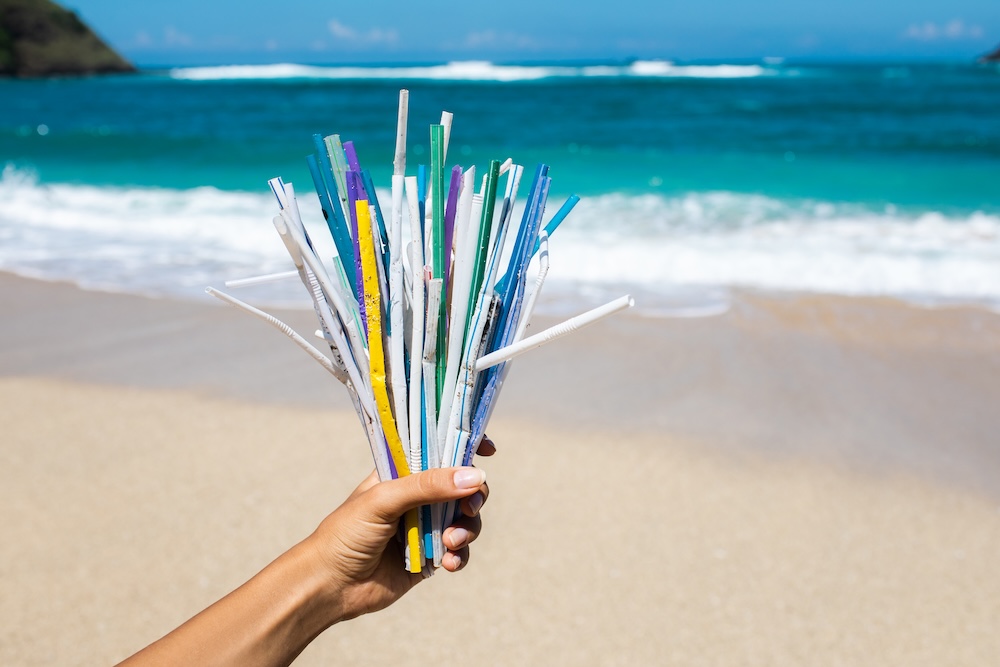A Shocking Number
Americans use roughly 500 million plastic straws every single day. That’s enough to circle the Earth more than twice — every single day. The average straw is used for less than 20 minutes, then discarded, yet it lingers in landfills and oceans for centuries.
What the hell, America? A product no one truly needs has become a symbol of how disposable our culture has become.
The Disposable Culture Behind Straws
How Straws Became Standard
Plastic straws were introduced as a convenient alternative to paper straws in the mid-20th century. With the rise of fast food and drive-thrus, they became standard issue — slipped into every cup without a thought.
Convenience Over Common Sense
Unlike forks or cups, which serve a clear function, straws are almost always unnecessary. Their widespread use reflects a culture of convenience where disposability trumps sustainability.
The Scale of Waste
Why 500 Million a Day Is Plausible
The number sounds exaggerated, but broken down it equates to about 1.5 straws per American per day. Factor in restaurants, bars, cafés, hospitals, and schools, and it adds up.
Hard to Measure, Easy to See
Even if the exact figure is debated, evidence of straw waste is everywhere: littered sidewalks, beaches, riverbanks, and storm drains. Straws are one of the top 10 items collected in coastal cleanups worldwide.
Straws in Oceans and Wildlife
The Viral Turtle Video
In 2015, a marine biologist filmed a sea turtle with a straw lodged in its nostril. The painful footage went viral, sparking outrage and global attention. That one video reframed straws as not just litter, but cruelty in action.
Birds, Fish, and Marine Mammals
Straws are lightweight, easily carried by wind and water. Marine animals mistake them for food or become entangled. Seabirds, dolphins, and fish have all been found with plastic straws in their stomachs. The consequences include choking, starvation, and internal injuries.
Straws in Our Bodies
Microplastics in Food and Water
Like other plastics, straws break down into microplastics. These fragments are now found in seafood, salt, bottled water, and even tap water.
Human Health Risks
Research is ongoing, but early evidence links microplastics to hormone disruption, inflammation, and possible impacts on immunity. A straw tossed aside today may eventually re-enter our own food chain.
Why Straws Symbolize a Bigger Problem
Small in Size, Massive in Meaning
By weight, straws account for only a fraction of ocean plastic. But their visibility makes them a perfect example of excess. Straws are not essential — yet we use hundreds of millions daily.
The Gateway to Systemic Change
Straw bans and campaigns served as entry points for broader conversations about single-use plastics. They show how symbolic action can lead to larger systemic pressure.
What About Paper and “Compostable” Straws?
Paper Straws
Paper straws biodegrade faster and don’t persist in oceans. But they require more energy and water to produce, and many people dislike their soggy texture.
Compostable Straws
Bioplastics marketed as compostable often require industrial composting facilities. In landfills or oceans, they behave much like conventional plastic. Substituting one single-use item for another rarely solves the core problem.
Real Alternatives
Skip the Straw
The simplest option: don’t use one at all. Most drinks are safe and comfortable to consume without straws.
Reusable Straws
For those who prefer them, reusable options in stainless steel, glass, bamboo, or silicone last for years. They eliminate waste while still offering convenience.
Accessibility Matters
It’s important to note that some people with disabilities rely on straws for safe drinking. Any policy or cultural shift must consider inclusion. Bans should be paired with exceptions and thoughtful design.
What’s Changed Since the Turtle Video?
Corporate Shifts
Major chains like Starbucks, McDonald’s, and Disney pledged to phase out plastic straws, switching to straw-by-request models or offering reusable alternatives.
Policy Action
Cities and states introduced bans or “request-only” laws, dramatically reducing plastic straw consumption in those regions. California, for instance, became the first U.S. state to require dine-in restaurants to serve straws only upon request.
Ripple Effect
Targeting straws opened the door for restrictions on plastic bags, Styrofoam containers, and other single-use items. Straws started the conversation; the real impact lies in what followed.
FAQs
Do straws really matter compared to other plastics?
Yes and no. Straws are a small part of total waste but a major entry point into the bigger single-use plastic problem. They symbolize the absurdity of disposable culture.
Why target straws and not bigger items?
Because they are non-essential and easily replaced. Addressing straws builds momentum for tackling larger, more complex plastics.
Are paper straws truly better?
Yes, in terms of biodegradability — but they still carry production costs. The best solution is skipping single-use straws altogether or using reusables.
Final Thoughts
Americans’ daily use of 500 million straws is not just a waste problem — it’s a reflection of a culture addicted to convenience. A straw used for minutes persists for centuries, harming wildlife, infiltrating ecosystems, and circling back into our own bodies.
Straws alone will not make or break the planet. But they force us to ask: if we can’t give up something so unnecessary, how will we ever tackle the bigger plastics problem?
The next time you order a drink, remember — what feels like a throwaway choice is really a choice about the kind of future we want to live in.









Reader Interactions